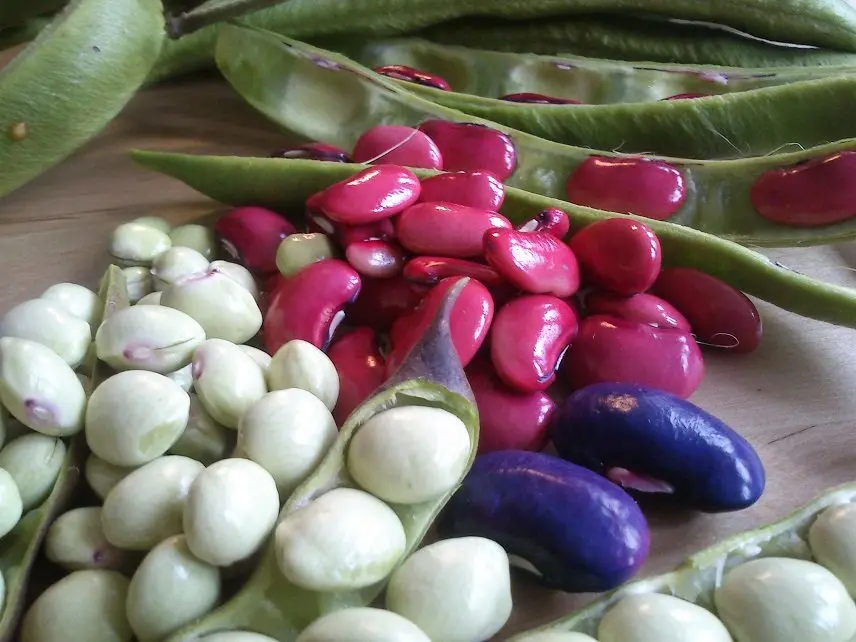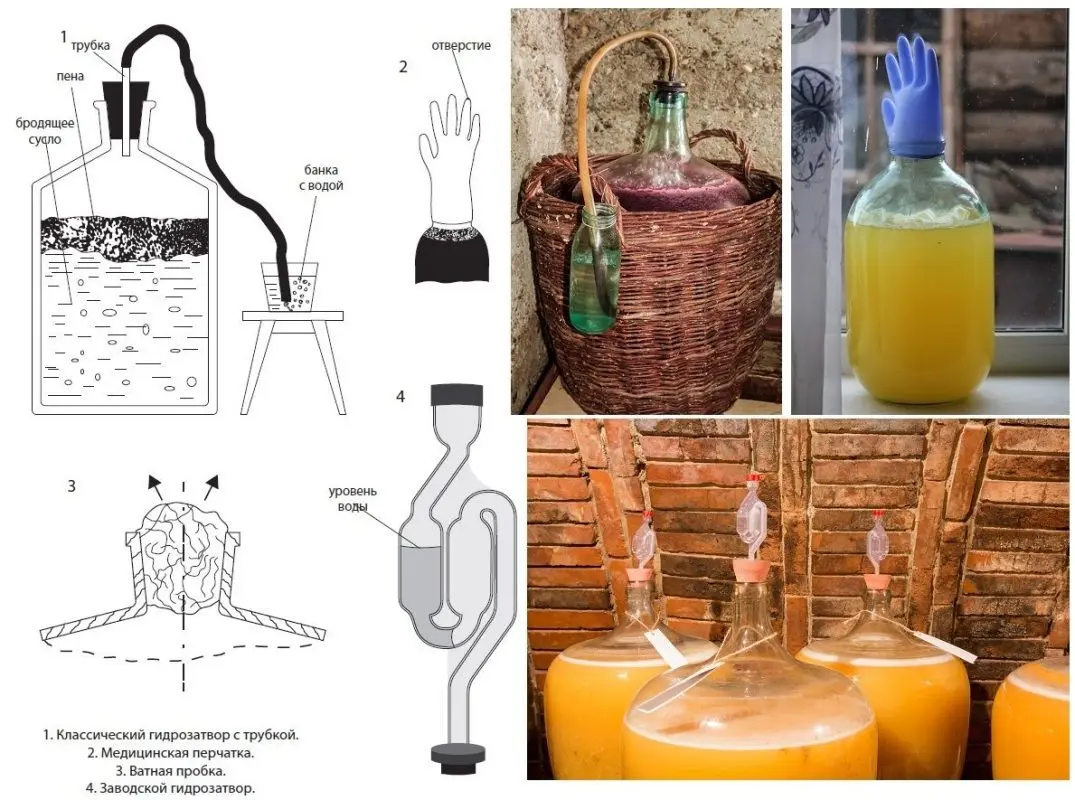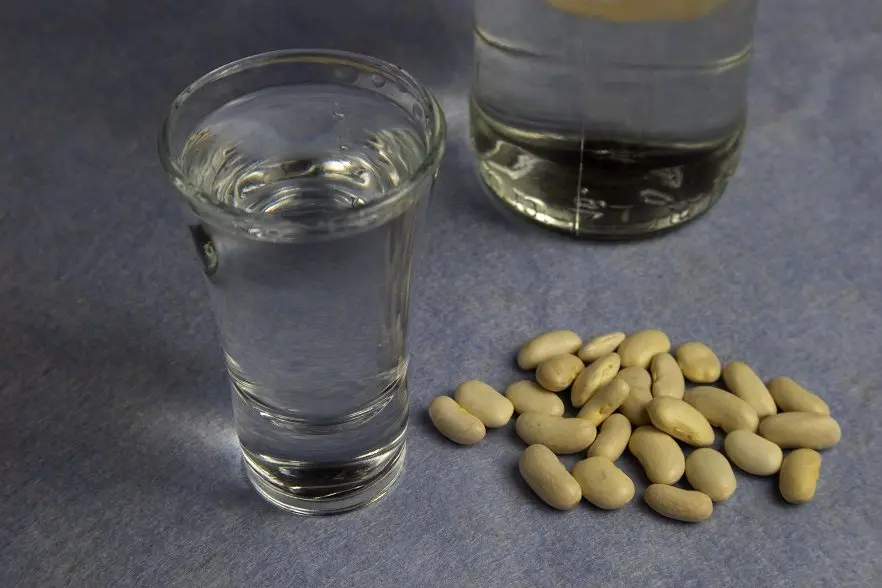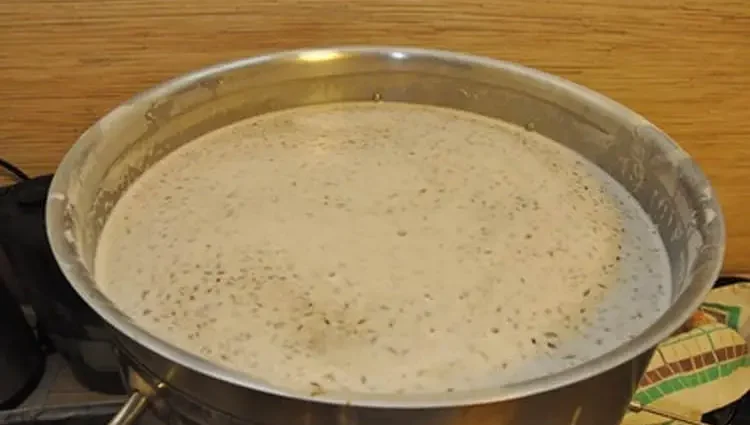Contents
Bean moonshine has subtle pea notes in aroma and taste. Suitable for consumption in its pure form or as the basis for strong men’s tinctures (not on fruits). A good option is to process excess beans (even substandard ones). As with any starchy raw material, there are two methods for preparing bean mash: cold and hot saccharification. We will consider both recipes.
Theory
To obtain a distillate, any kind of beans is suitable: white, red, etc. You can use slightly spoiled and even moldy raw materials.
Beans contain about 15% starch. This means that from 1 kg of raw materials you can get up to 210 ml of forty-degree bean moonshine, however, the practical yield will be 10-15% lower than the theoretical one.

Yeast is not able to process pure starch into alcohol, so the starch in beans must be broken down into simple sugars before fermentation. This can be done in two ways: the first is with the help of malt (classic hot saccharification) and special enzymes (cold saccharification). Both technologies, as well as their advantages and disadvantages, are described in a separate article on the methods of saccharification of starch-containing raw materials.
In the context of moonshine from beans, the choice of method is not fundamental, since this raw material does not have unique notes in aroma and taste that should be preserved. Cold saccharification is easier, but requires special yeast (Koji), and the fermentation process itself takes longer. Hot saccharification is impossible without malt and maintaining temperature conditions (a thermometer is required), which complicates the process, but this method is considered more natural, fermentation is faster, and the distillate yield will be increased due to malt (up to 800 ml with a strength of 40% vol. from 1 kg of malt ).
Separately, it should be noted that beans contain quite a lot of protein – about 8%. This means that if this protein is not broken down, then the mash will foam strongly and, during distillation, can burn, ruining the moonshine. With cold saccharification, the enzymes themselves will process almost all the protein in the beans, and with hot saccharification, an additional step will appear, with the help of which it will be possible to destroy protein compounds.
Due to the relative complexity of the process of making bean mash, adding sugar to increase the yield is considered impractical.
For fermentation, any spirit or baker’s yeast is suitable.
How to make bean mash
Ingredients:
- beans – 5 kg;
- water – 20-30 l;
- Koji yeast – 45 g (only for cold saccharification);
- baker’s or alcohol yeast – for 25 liters of wort (only for hot saccharification);
- barley malt – 1,5 kg (only for hot saccharification).
Koji bean mash (cold saccharification)
The exact amount of yeast is indicated in the instructions on the package and may differ from the values uXNUMXbuXNUMXbgiven here.
1. Disinfect the fermentation tank with steam, iodine (dilute 10 ml of iodine in 25 liters of water in cold water, pour over the edge, leave for 60 minutes) or in any other way.
Due to the slow fermentation, the wort can be contaminated with pathogenic microorganisms, so disinfection is required, and some moonshiners still add antibiotics to the Koji mash.
2. Grind the beans into cereals, even better – into flour. You can’t ferment whole beans because the starch won’t break down.
3. Boil water (20 l) and pour bean groats (flour) into it. This is done in order to disinfect raw materials.
4. Wait for the wort to cool down to 30-32°C, then add the Koji yeast according to the package instructions. At higher temperatures, the yeast will die.
5. Move the wort to a fermentation tank, install a water seal of any design on the neck (required, otherwise the mash will turn sour).

6. Move the mash to a dark place with a stable temperature of 20-28°C (recommended – 25-26°C). Stir once every 4-5 days so that the enzymes are evenly distributed throughout the wort. Leave until the end of fermentation (usually lasts 20-28 days). The first signs of fermentation appear 6-20 hours after the introduction of yeast.
The bean mash that has won back on Koji becomes lighter, a layer of sediment appears at the bottom and the water seal stops releasing gas. You can’t taste such a mash!
Classic bean mash recipe with malt (hot saccharification)
Barley malt is best, but other malts, such as wheat or rye, will work.
Attention! It is very important to observe the indicated temperature regimes, controlling the temperature with an immersion thermometer, otherwise the starch will not break down into sugar.
7. It is advisable to grind the beans into cereals or flour for faster boiling. Whole beans are also suitable, but they will be cooked for a very long time – at least 3-4 hours (against 1-1,5 hours of cereals or flour).
8. Heat up 25 liters of water to a temperature of 50-55 °C. Pour the beans into a bowl for cooking. Slowly pour in the water, stirring constantly so that lumps do not appear (relevant for flour or cereals). Fill the container to a maximum of 75%.
9. Raise the temperature to 60°C and hold for 15 minutes, stirring occasionally to keep the wort from burning near the bottom.
10. Boil the wort, then cook for 1-4 hours over medium heat until a homogeneous mushy mass is obtained. Stir near the bottom.
11. Cool the resulting porridge to 44-59 ° C and boil in the specified temperature range for 15 minutes. This is a protein pause that will break down the proteins so that the mash is less foamy, less viscous and does not burn during distillation.
12. Raise the temperature to 63-68 °C (necessarily not higher than 71 °C), gradually add ground malt to the wort, stirring.
13. Equalize the temperature of the wort to 61-65 °C and cover the container with a lid. Maintain the specified temperature for 60-90 minutes by slowly heating, wrapping the container in warm clothes or keeping it in a bath of hot water. If the wort has become sweet, then the saccharification was successful.
14. In order not to infect the mash, cool the wort to 25-29 ° C as quickly as possible by adding 5 liters of cold water. If necessary, you can place the pan in a bath of cold water or ice.
15. Pour the wort into a fermentation tank, add alcohol (the amount is indicated in the instructions on the bag) or baker’s yeast (50 g dry or 250 g pressed). Mix. Install a water seal of any design.
16. Move the bean mash to a dark place with a stable temperature of 20-28 °C. Leave until the end of fermentation (usually 4-8 days). The fermented mash does not taste sweet, it becomes lighter, a layer of sediment appears, the water seal stops releasing gas (the glove deflates).
Getting moonshine from beans
17. Strain the mash that has won back through 2-3 layers of gauze, removing the remnants of hard parts that can burn during distillation.
18. Overtake the mash for the first time without division into fractions. Select the product until the strength in the jet drops below 20%.
19. Measure the strength of bean moonshine of the first distillation. Determine the amount of pure alcohol (strength in percent multiplied by the volume in liters and divided by 100). If desired, clean the moonshine with charcoal or other methods.
20 Make a second distillation. Collect the first 10% of the yield of pure alcohol separately. This “head” is a harmful fraction that should not be drunk.
21. Finish collecting the main drink (“body”) when the strength in the stream drops below 45%. Then you can separately select “tails” to add to a new portion of the mash or finish the distillation.
22. Dilute the resulting moonshine from beans (“body”) with water to a drinking strength of 40-45% vol., pour into a glass container and leave in a dark, cool place for 3-4 days to stabilize the taste.











